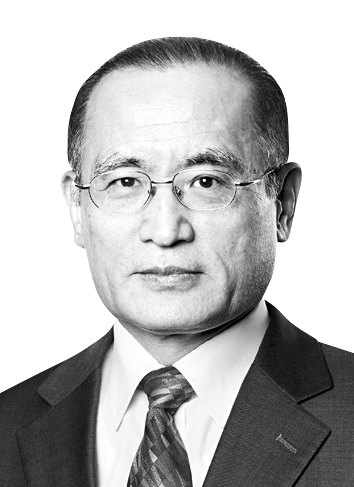Time for a reinforced nuclear deterrence

The author is a former South Korean representative to the six-party talks and head of the diplomacy and security division of the JoongAng Ilbo’s Reset Korea campaign.
North Korea has started saber-rattling at the new South Korean government. In a speech to mark the 69th anniversary of the July 27 end of the Korean War, North Korean leader Kim Jong-un blasted his new South Korean counterpart Yoon Suk-yeol for his remarks and behavior by threatening destruction of his government and military. It is rare for a North Korean leader to criticize a South Korean leader directly and openly. Even for North Korea, public condemnation of a South Korean leader has not been common. The hostility signals a cold spell in inter-Korean relations.
It also could toughen Seoul’s policy on North Korea. Various hawkish opinions from outside could gain ground. Some could demand nuclear armaments or deployment of U.S. tactical weapons. But such ideas won’t likely be approved by the Yoon administration or the opposition-dominant legislature or the United States. Some advise greater efforts to renew dialogue with North Korea. Given its show of animosity toward the new conservative government, Pyongyang won’t likely take up the offer.
The policy on the North Korean nuclear issue must keep extremities at bay and seek a balanced and realistic solution. First of all, Seoul must not trigger a vicious hostility cycle by responding strongly to Pyongyang. It must keep command over the situation and leave the door open for dialogue without begging for talks. At the same time, Seoul must strengthen deterrence against North Korea’s nuclear missile capabilities. Since South Korea cannot go nuclear or employ tactical nukes, Seoul must leverage U.S. extended deterrence.
But the trajectory of the development of nuclear weapons and missiles in North Korea over the past 10 years clearly shows that coordination on extended deterrence cannot be maintained at the current level. Under Kim Jong-un’s command, North Korea has developed both strategic and tactical nukes and commands an array of missiles that can reach varying distances. It can target South Korea, Japan, Guam and the U.S. mainland.
The U.S. could worry about North Korea’s nuclear threat to the mainland more than its pledge of extended deterrence for South Korea. North Korea’s progress in nuclear and missile capacity has come to undermine U.S. deterrence ability and the South Korea-U.S. relationship.
Despite the challenges, there has not been meaningful change to the discussions on extended deterrence. In 2016, South Korea and the U.S. established the Extended Deterrence Strategy Coordination Group (Edscg). But Washington has been largely reluctant to have a close consultation with Seoul on issues related to the operation of nuclear weapons. But that does not apply to all allies. America has been running a Nuclear Planning Group (NPG) within NATO for regular discussions on nuclear weapons employment.
South Korea must seek detailed measures to raise the credibility of extended deterrence in light of the advances in North Korean weapons capacity. It must relieve the public, mitigate calls for nuclear armaments, and send a clear message to North Korea so as not to cause misjudgments. Since the government is reactivating the Edscg, I’d like to make a few suggestions.
First, South Korea must draw a consensus on enhancing the reliability of the extended deterrence through high-level talks and hand down orders to lower-level officials to overcome the U.S. bureaucratic reluctance to have consultation on the operation of nuclear weapons.
Second, South Korea must build up its logic before entering negotiations with the U.S. to help bring about sincerity from America. Korea must present visions on the procedure to activate extended deterrence under various scenarios, strike targets, and sequences in action plans. The discussions must not stop at the theoretical and basic level.
Third, extended deterrence discussions must be reflected in Korea-U.S. joint military drills and operational command. It is undesirable to operate military drills without reference to extended deterrence.
Fourth, South Korea needs to consider the idea of operating a NATO-like nuclear planning group with other U.S. allies in the region. It must carefully study the scope of cooperation with Japan.
As the inter-Korean relations have entered a dangerous phase, South Korea needs to present a reinforced nuclear deterrence through close consultation with Uncle Sam while managing the situation not to escalate it to crisis at the same time. That will certainly help reassure the people, contain North Korea's aggressiveness, and also function as a precious asset for future negotiations with North Korea.
Translation by the Korea JoongAng Daily staff.










with the Korea JoongAng Daily
To write comments, please log in to one of the accounts.
Standards Board Policy (0/250자)